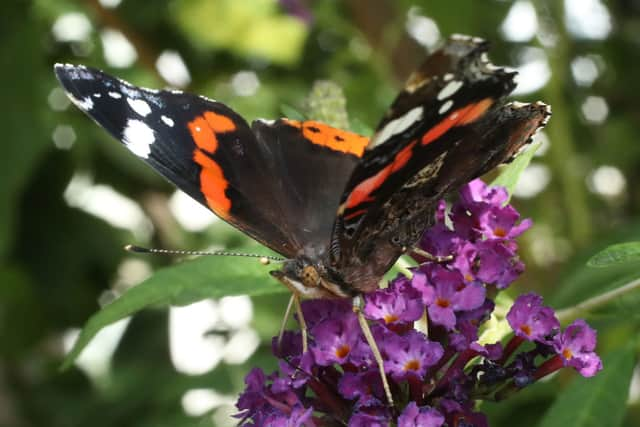Big Butterfly Count: climate change to blame as survey suggests red admirals no longer migrating overseas
and live on Freeview channel 276
Red admiral butterflies are opting to skip their winter migrations and stay in the UK, a citizen science survey has revealed, with climate change the likely culprit.
This week is the final week of the Big Butterfly Count, with Butterfly Conservation calling on people across the UK to take part in this year's "vital" project - to help researchers understand the impact of climate change on the UK's most-loved butterflies.
Advertisement
Hide AdAdvertisement
Hide AdWith half of Britain’s butterfly species either already threatened or close to it, scientists fear last year's record high temperatures may have caused numbers to crash this year - as the extreme heat kills off plants that caterpillars need to eat.
Now preliminary results have shown that many red admirals - which normally travel up from continental Europe or North Africa in the spring to lay eggs in the British countryside - are now overwintering in Southern England, causing their numbers in the UK to rapidly shoot up.


The red admiral has taken out top spot as the number one most-observed butterfly so far, from surveys completed between 14 July and 2 August, with butterfly-watchers logging more than 177,000 sightings. That is 150,000 more red admirals than were spotted during the same period last year.
Butterfly Conservation - the charity behind the annual count - said there was “no doubt” that climate change was the main driver behind this, and as average temperatures continued to creep up, so too would the number of red admirals spending their winters in the UK.
Advertisement
Hide AdAdvertisement
Hide AdSenior surveys officer Dr Zoe Randle said they were surprised to see the red admiral taking the lead. "However with the increased frequency of warm weather, the UK may well become a permanent home for this species".
The results so far showed just how vital the Big Butterfly Count was, she said. "We couldn’t get the depth and breadth of data we’re collecting without the help of the general public... We’re calling on people across the UK to please get out for the count and record your butterfly sightings over the next few days."
Dr Randle added: “With climate change here to stay, we need people to take part more than ever before and help us understand how extreme weather is affecting our butterflies.”
The Big Butterfly Count continues until Sunday (6 August). You can read more about how to take part in the Big Butterfly Count here.
Comment Guidelines
National World encourages reader discussion on our stories. User feedback, insights and back-and-forth exchanges add a rich layer of context to reporting. Please review our Community Guidelines before commenting.
